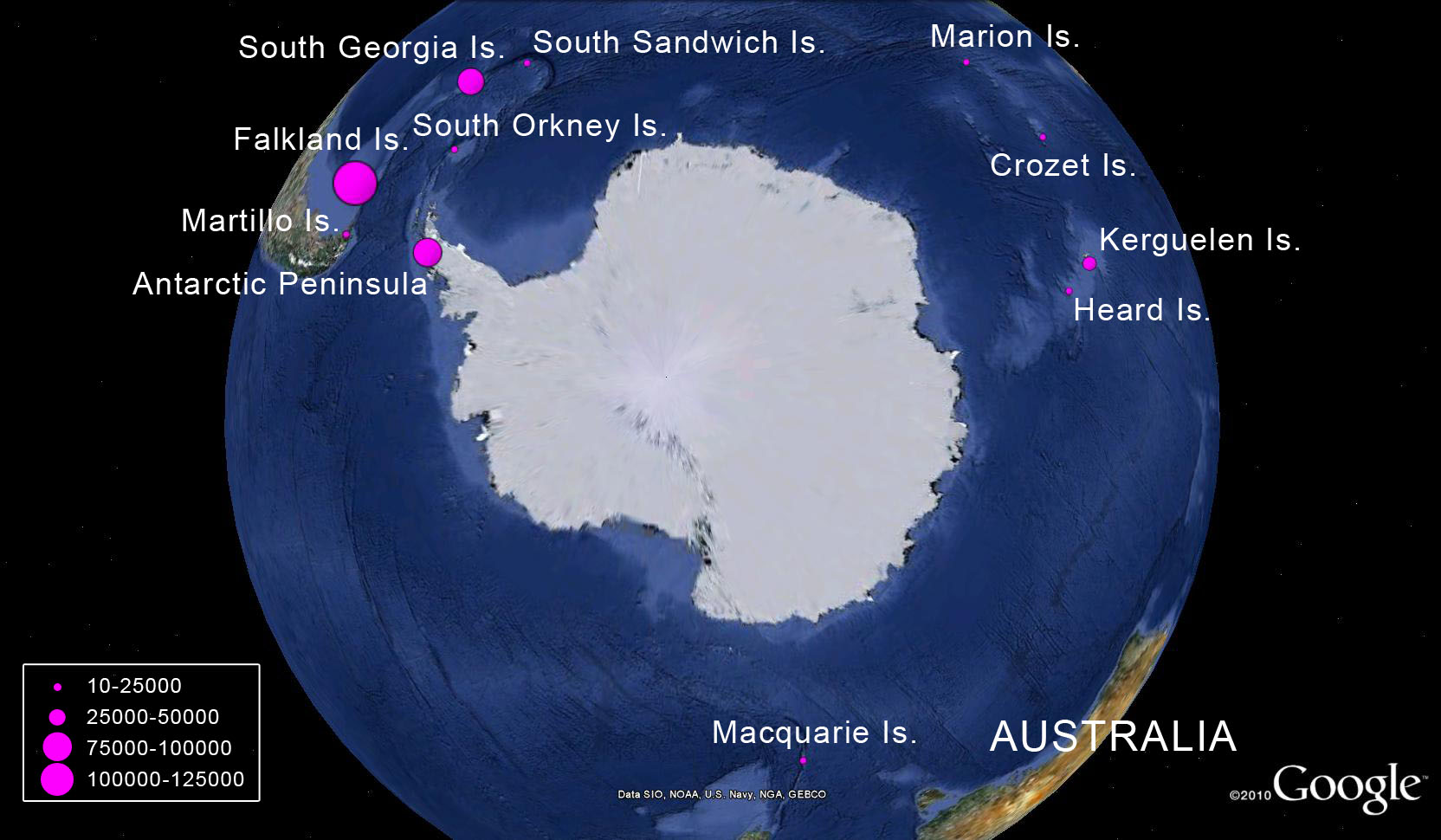-
DESCRIPTION
-
The third largest penguin (5,5-7,5 Kg; 65 cm tall). Males typically larger than
females. In the adult, throat, exterior portion of the wing, and back black.
Ventral surface from the breast down to the vent, white. Black face and head
with the exception of two white variably sized patches above, and usually
continuous with, white eye-rings and connected via a thin white band over the
crown of the head. Long black tail. Red-orange bill except for along the upper
mandible and at the tip, which are black. The upper mandible may also have an
elongated yellow to red spot. Pink to orange to red feet. Gentoos can have
widely varying morphologies, possibly adaptive to local oceanographic
conditions. Chick gray dorsally from the crown to the tail and white ventrally
including throat.
-
DISTRIBUTION
-
Sub-Antarctic islands with the main colonies on the Falkland/Malvinas Islands,
South Georgia and South Shetland Islands and the Antarctic Peninsula; smaller
populations on Macquarie Island, Heard Islands, Crozet and Sandwich.

-
HABITAT
-
Marine, rocky coasts or flat beaches. Nest on flat beaches or in tussock
grasses, or on low lying gravel beaches and dry moraines.
-
BREEDING BIOLOGY
-
They are much smaller than is typical of other Pygoscelid species, with the
largest including only c. 6,000 breeding pairs. The settlement at Possession
Island, Crozet Island is by the end of June, early July, egg laying of two eggs
from to July to late November. Incubation lasts 35-37 days. Fledging at 89 days.
Age of maturity at 2 years old.
Photos by: J. Weller, J. Deely, C. Sutter and H. Lynch





